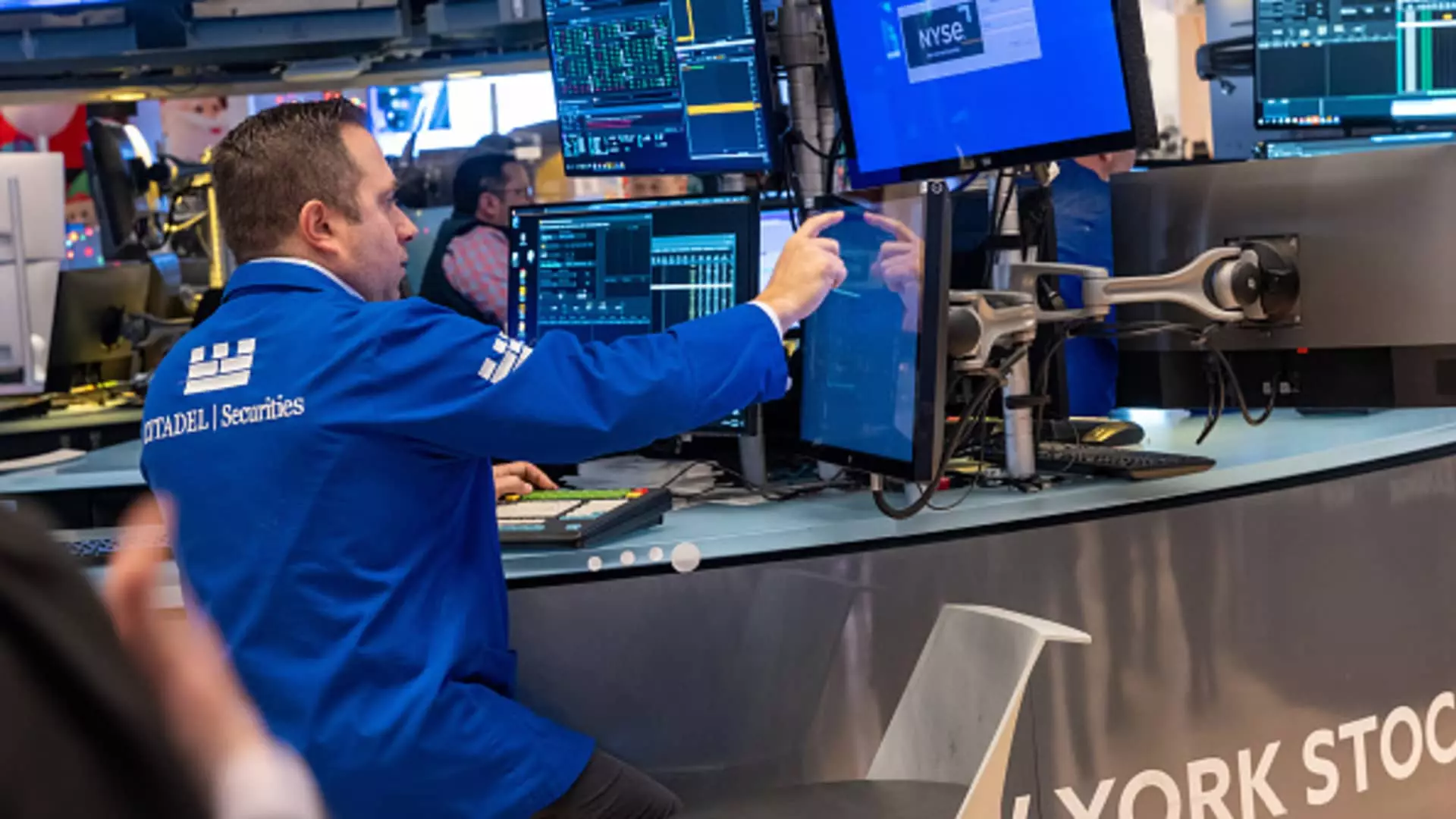The stock market faced a significant downturn recently, triggered by an unexpectedly robust jobs report that has complicated the landscape for future interest rate adjustments by the Federal Reserve. Investors had anticipated a different economic trajectory, as the numbers released for December painted a picture of continued strength in the labor market, contrasting sharply with the prevailing sentiment on Wall Street. As a consequence, the major stock indices experienced a sharp decline, raising questions about the sustainability of recent market growth.
On one hand, the U.S. economy added 256,000 jobs in December, significantly exceeding the expert forecast of 155,000 jobs. This unexpected gain prompted many traders to reassess the Federal Reserve’s likely actions regarding interest rates. Traditionally, stronger job growth could signal economic resilience, allowing the Federal Reserve to maintain or increase rates to curb inflation. The unemployment rate’s decrease from an expected 4.2% to a surprising 4.1% further underscored this narrative. Such data could normally be seen as good news; however, for investors, it created anxiety about continued aggressive rate hikes.
Wells Fargo’s senior market strategist Scott Wren aptly articulated this paradox, noting, “Good news for the economy but not for the markets.” This observation highlights the discomfort investors feel as they consider the implications of a strong labor market on interest rates. While the initial economic indicators appear favorable, the subsequent reactions in financial markets reveal an apprehension rooted in the fear of economic overheating and the possibility of losing favorable borrowing conditions.
Consequently, the yield on the 10-year Treasury note surged to its highest point since late 2023, representing a critical adjustment in expectations following the jobs report. The bond market functions as a barometer of investor sentiment, with rising yields often suggesting fears of inflation or anticipated moves by the Federal Reserve. Recent probability assessments reveal that traders are now anticipating a continuation of current interest rates during the Fed’s upcoming meetings, with the likelihood of a rate cut in March diminishing sharply.
The drop in the likelihood of a rate cut from 41% to around 25% following the jobs data demonstrates a significant market recalibration in response to economic indicators. The central bank previously opted for a quarter-point rate reduction in December, which begs the question: Are we witnessing a shift in the Federal Reserve’s overall monetary strategy in light of new labor statistics?
Additional factors compounded the market’s downturn. The University of Michigan’s consumer sentiment index for January revealed a sharper-than-expected decline, landing at 73.2 versus a projected 74. This decline, stemming from rising one-year inflation expectations that reached 3.3%, illustrated growing unease among consumers regarding the cost of living. Notably, five-year inflation expectations also increased to levels not seen since before the global financial crisis of 2008.
This deterioration in consumer sentiment is particularly concerning as it may foreshadow less consumer spending in a traditionally consumption-driven economy. The combination of rising borrowing costs and declining consumer confidence can create a drag on economic growth. As such, growth-oriented stocks took a significant hit as investors reassessed their positions in light of potential future financial volatility.
Individual sectors reacted accordingly, particularly growth stocks, which faced sharp losses amid fears that higher interest rates could stifle their growth trajectories. Companies like Nvidia, AMD, and Broadcom saw notable declines, with small-cap stocks—often more sensitive to changes in borrowing conditions—following suit.
As noted by LPL Financial’s Adam Turnquist, the rapid movement in interest rates, while troubling for equity markets in the short term, may reflect underlying economic strength that could ultimately lead to better earnings and less recession risk in the long run. His perspective encourages a reevaluation of market sentiment amid volatility, urging investors to consider long-term potential rather than short-term fluctuations.
The recent stock market plunge serves as a reminder of the complexity of economic indicators and their intertwined impacts on financial markets. As investors grapple with the implications of robust job growth against the backdrop of potential rate hikes, the outlook remains uncertain. Continued vigilance will be essential as market participants navigate these turbulent economic waters.



Leave a Reply